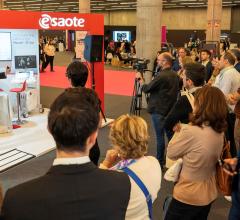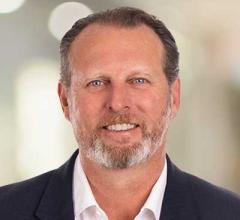
GE Healthcare's Vscan hand-held ultrasound system.
Rapid advances in the computational capabilities of modern processors and their affordability have significantly sped up the development of novel technologies in cardiovascular imaging. Users are slowly moving away from expensive, large, stationary, and complex systems to smaller, easier to use and more accessible technology. Parallel to today’s smartphones and wireless technology, the medical field has seen the emergence of miniaturized pocket-size echocardiography systems that can be used in conjunction with telecommunications and information technology to provide healthcare from a distance.
Echocardiography is a natural application for telemedicine, as handheld ultrasound devices and cloud-based transmission solutions make it possible to perform a test at a remote location and have consultation, in real time, by an expert thousands of miles away. Telemedicine can eliminate the need for travel, reduce wait time for test results, and is cost effective.
India as a Testing Ground for Telecardiology
Rural communities in developing countries like India face the dual burden of high rates of cardiovascular disease and barriers in accessing diagnostic and referral programs.[1-6] Epidemiologists in India and international agencies have highlighted the rapidly rising burdens of cardiovascular diseases, with the reported prevalence of coronary heart disease having doubled over the past 30 years.[1] Cardiovascular disease is now the leading cause of death in India. A study conducted in 45 villages in 2004 revealed that 32 percent of all deaths in India were due to CVD, outranking infectious diseases, which were responsible for 13 percent.[4]
India is already considered to be the diabetes capital of the world, with 32 million persons affected. This number is projected to rise to 69.8 million in 2025. The number of hypertensive individuals is expected to rise from 118 million in 2000 to 214 million in 2025.[50] Exacerbating this epidemic is a huge inequality in healthcare distribution. Although nearly 75 percent of Indians live in rural villages, more than 75 percent of Indian doctors are based in cities.[6]
In late January 2012, a project sponsored by the American Society of Echocardiography (ASE), in collaboration with GE Healthcare, used technological innovations in the field to support bringing cardiovascular ultrasound to an underserved population in rural India. ASE’s aim of this event was to perform focused echocardiograms in a rural setting in northwest India, supported by long-distance Web-based consulting to facilitate appropriate care and referral of patients with cardiac disease.
Use of Handheld Ultrasound
Clinicians leveraged GE Healthcare technology, including the Vscan pocket-sized visualization tool to facilitate the acquisition of the images and provide an educational and awareness vehicle for India-based physicians. The ASE Global: Focus on India project, ASE-Remote Echocardiography with Web-Based Assessments for Referrals at Distance (ASE-REWARD), coordinated the travel of nine ASE member cardiovascular sonographers to a remote location in northwest India, where an estimated 15 million people had gathered for a meditation camp. The sonographers and their India-based physician counterparts from Medanta, the Medicity, in Gurgaon, part of India’s National Capital Region, used technology to provide free imaging services. Focused cardiac ultrasound examinations were performed on 1,030 patients using GE Healthcare’s pocket-sized, hand-held cardiac ultrasound units called Vscan. The patients had been pre-screened by paramedical workers and had symptoms, or were suspected to have cardiac abnormalities, but had not had an imaging study in the past year.
Vscan is a visualization tool that facilitates acquisition of cardiac images, including standard views of the heart chambers with additional use color-coded bloodflow displays for assessing cardiac valves. Sonographers also used Vscan for providing educational awareness and training to Indian physicians present onsite. In remote areas, as well as in today’s clinical setting, the ability to take a “quick look” may not only help clinicians detect disease earlier, but may be useful for prioritizing triage patients.
The echos were performed, digitized and uploaded to the Internet cloud. More than 70 board-certified physicians at locations worldwide, ranging from major U.S. and Canadian hospitals to countries such as Georgia, Bulgaria, Greece and Saudi Arabia, provided consultation of the images. The medical reports were then forwarded to India based physicians to ensure follow up medical care.
This project elevated cardiovascular ultrasound to a new level, taking it out of the lab to people who would not ordinarily have access to care. The cardiology community has hailed the unprecedented success of this mission. James D. Thomas, president of the ASE, described it as one of the “most successful outreach programs in ASE’s history.” The scientific observations from this event have been compiled and accepted for presentation as “ASE-Remote Echocardiography with Web-based Assessments for Referrals at Distance (ASE-REWARD) Study” at the late breaking trial session of the ASE’s 23rd Annual Scientific Sessions, June 30-July 3, National Harbor, Md.. The study underscores the enormous potential of remote, real-time echocardiography using Web-based integration of services for mass triage. Resource integration and assessment of focused echocardiograms through a cloud-computing environment may be a useful solution in expediting care and reducing healthcare costs for countries like India.
Ultrasound Becomes Miniaturized
Gordon Moore, one of the inventors of integrated circuits and co-founder of Intel, noted in the mid-1970s that twice as many transistors could be squeezed on an integrated circuit every 24 months. This trend, popular as “Moore’s Law”, has been subsequently extended to describe an exponential pattern of growth for all technological progress. The ASE-REWARDS study highlights the exponential change that has continued in technological innovation in health care. Ray Kurzweil, in his 2001 essay The Law of Accelerating Returns, suggests that if this exponential change continues, we won’t experience 100 years of innovations in the twenty-first century; rather we will witness on the order of 20,000 years of progress compared to what was achieved in the 20th century.
One can imagine that in the near future, medical professionals may no longer need personal workstations, and may instead have their eyeglasses (like Google-glasses) as their personal computers, allowing access and viewing information through embedded monitors and sharing what they see with colleagues and supervising physicians via miniaturized cameras hidden in the frames of their glasses. Moreover, future cardiac imagers could have personal sets of their own software for analyzing the image clouds of virtual patient databases. A variety of programs are available to ensure compliance with HIPAA and other regulations. The mandate is complex; however, as it is being driven primarily by the galloping growth of computer technology, the possibilities are immense.
Editor’s note: Partho Sengupta, M.D., DM, FASE, is an a associate professor of medicine\ and director of cardiac ultrasound research at the Zena and Michael A. Wiener Cardiovascular Institute, Marie-Josée and Henry R. Kravis Center for Cardiovascular Health, Mount Sinai Heart in New York, N.Y. He is a member of the American Society of Echocardiography (ASE) and is the India liaison for the ASE International Relations Task Force and leader of the project.
References:
1. IC Health, Supported by Ministry of Health and Family Welfare, Government of India and World Health Organization. National Cardiovascular Disease Database. Available: http://www.whoindia.org/LinkFiles/NMH_Resources_National_CVD_database-Final_Report.pdf
2. Reddy KS, Shah B, Varghese C, Ramadoss A. “Responding to the challenge of chronic diseases in India.” Lancet 2005;366:1744-1749.
3. World Health Organization. “The World Health Report 2005. Preventing Chronic Diseases: A Vital Investment.” WHO, 2005.
4. Joshi R, Cardona M, Iyengar S, et al. “Chronic diseases now a leading cause of death in rural India — mortality data from the Andhra Pradesh Rural Health Initiative.” Int J Epidemiol 2006;35:1522-1529.
5. Kearney PM, Whelton M, Reynolds K, et al. “Global burden of hypertension: analysis of worldwide data.” Lancet 2005; 365:217-223.
6. Agence-France Presse (2005 March 17) India to launch satellite exclusively for telemedicine. Available: http://servesrilanka.blogspot.com/2005/0 3/india-to-launch-satellite-exclusively. html.






 August 27, 2024
August 27, 2024 








